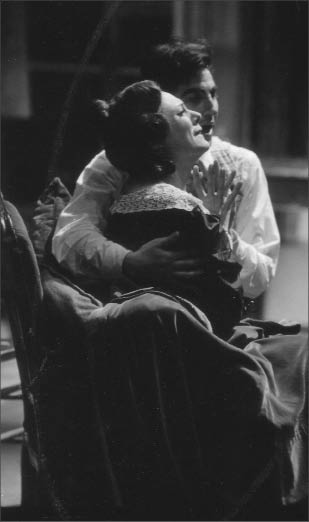The Unkindest
cut of All, Part I

They say that football is a game of inches. I could say the same thing about a certain production involving Renata Tebaldi. The year was 1965, and we were doing La Bohème at San Francisco Opera. It was the first time I had ever worked with her. Talk about nerves — and not just because she was a living legend and I was relatively unknown. You see, I had a bit of a crush on her. To start with, I simply couldn’t get enough of her singing. Whenever I studied a score I invariably turned to her recordings. It also didn’t hurt that she was gorgeous, with wonderful peaches-and-cream skin. As we started rehearsals I was so star-struck that I gaped at her constantly and my assistant had to remind me, “Lotfi, please close your mouth!”
But that feeling didn’t last too long. Tebaldi turned out to be virtually impossible to direct. Her preference seemed to be to move as little as possible. A few steps here and there, yes. But if I suggested much more than that, she would reply sweetly with an angelic smile on her face, “No, maestro, no. I cannot do that.” Her nickname was “The Iron Butterfly,” and I began to see why. She was polite but firm. Still, she wasn’t merely stubborn. I may have been somewhat green, but I was already quite familiar with that particular quality in singers. No, there was something else. Nicola Rossi-Lemeni, the great Italo-Russian bass, had dated her for a while and once told me that the relationship didn’t go anywhere because her favourite topic of conversation was her digestive tract. The thought occurred to me that she found my direction hard to swallow.
At any rate, I adjusted my plans to accommodate her. What else could I do? I knew damn well that the audience was coming not for Maestro Mansouri but for Madame Tebaldi. However, I did end up having a problem that I couldn’t have foreseen in my wildest dreams. The last act of La Bohème is absolutely heartbreaking. Poor Mimì is on her deathbed, surrounded by her dear friends. Our set, appropriately, had a bed that was just dying to be used for the purpose. Let me be emphatic: every production of La Bohème — from the most traditional to the most ludicrous — has Mimì dying in a bed. How could I imagine that Madame Tebaldi would see things differently? As I staged the scene, however, she looked over to me, again with that angelic smile, and said, “Oh no, no, no, maestro. No. I cannot sing lying down on that bed.”
I was taken aback. “But Madame Tebaldi, Mimì is sick. She is dying.”
More angelic smiling. “No, sorry, maestro. It is not possible.”
“Look,” I said, trying to reason with her, “I’ll put lots of cushions for you, bolsters, anything you want, but you must have your last scene in the bed.”
“No, sorry, maestro. Not the bed. No, not in the bed.”
At the end of my rope, I looked her straight in the eye and asked, “Madame Tebaldi, how would you like to die?” In case you’re wondering, I did, in fact, have a dark fantasy for a split-second as I asked this question.
“In a chair,” she responded solemnly.
It seemed preposterous to me, but I knew with certainty that she would never get into that bed, and I couldn’t very well have her die standing. I had the prop man bring out an armchair and she perched on it regally. Then a look came over her face. “No, no, maestro. It’s too high, too high.” Another armchair, another look. “No, maestro, no. It’s too low.” Finally, we found an armchair that was good for her in every way, except it was a little too high. Two carpenters were summoned to cut down the legs one inch at a time until Madame Tebaldi felt that her body was in just the right position.
When the reviews came out, I saw that one critic had observed, “How can Mansouri, as the stage director, allow poor Mimì to die in a chair when there’s a perfectly good bed in the room?” That was the unkindest cut of all!

Renata Tebaldi (in the cut-down chair) and Renato Cioni in La Bohème, 1965.
Photo by Carolyn Mason Jones.
Sometime later I learned there was a very real reason for what I perceived as Tebaldi’s stubbornness. Earlier in her life she had suffered from polio, and it had left her with chronic discomfort. For her whole career she was never considered a particularly strong actress, and here was the primary reason. She simply didn’t feel comfortable moving. As a director, this fascinates me. Many performers live with infirmities and draw on these to flesh out personas onstage. For Tebaldi, and no doubt others, it was important to keep the pain as far away as possible. She may not have been much of an actress, but her singing told all.